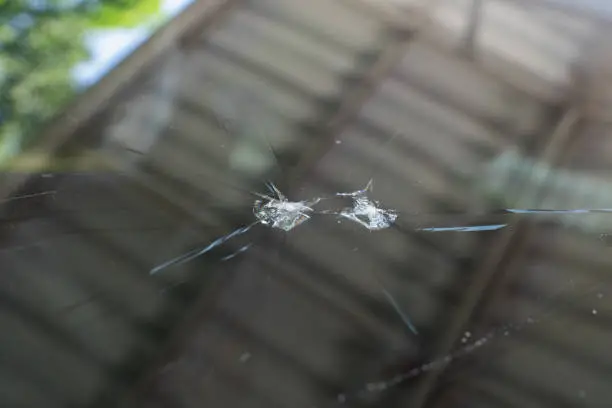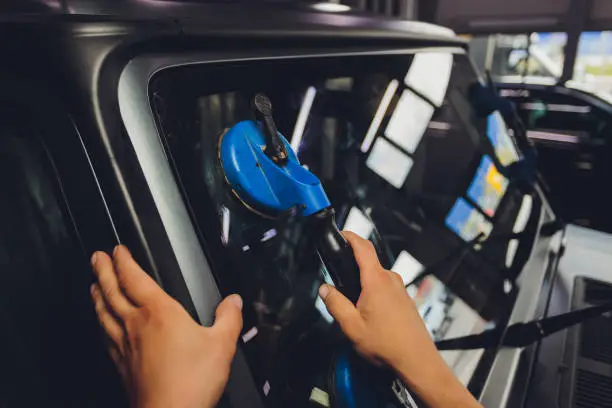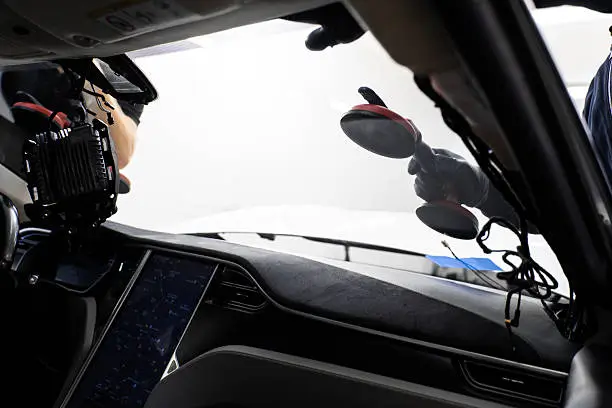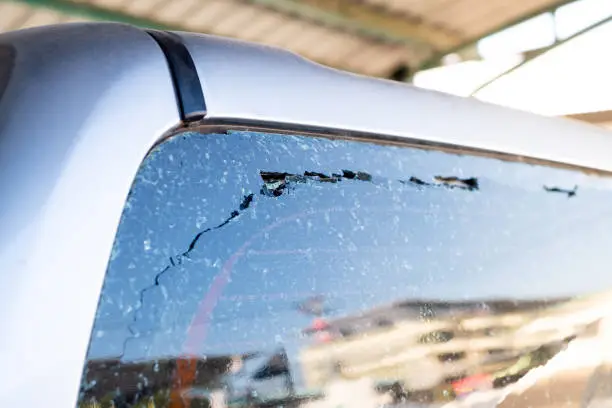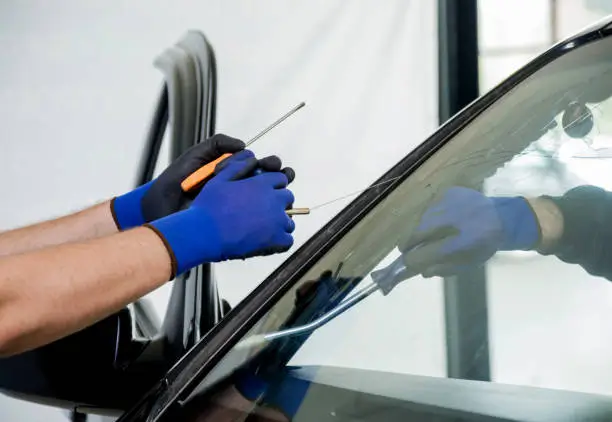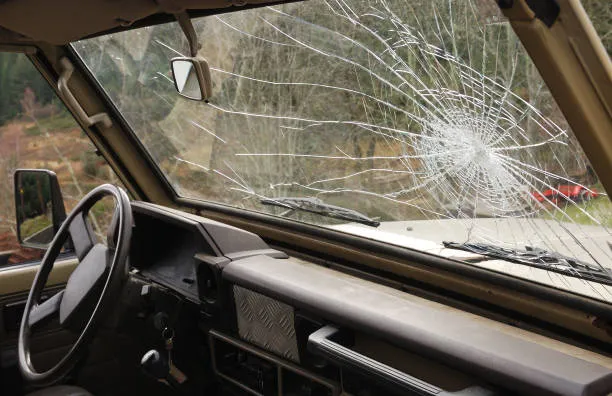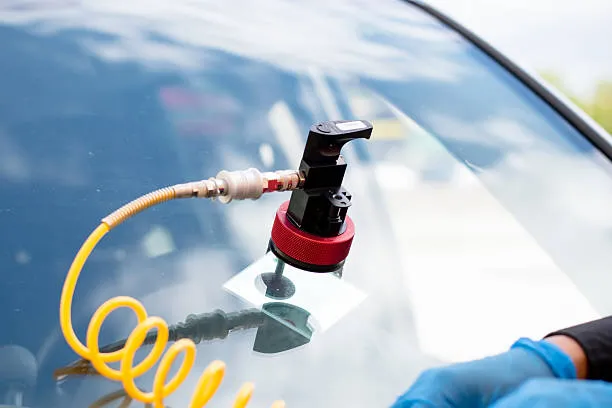That tiny chip could cost you a full replacement. Here’s how timely repair protects your wallet.
A small chip in your windshield may not seem like a big deal, but ignoring it is one of the most expensive mistakes a driver can make. Timely repair is about protecting your safety, maintaining your car’s value, and preventing unnecessary stress. If you’ve ever searched for “car window chip repair near me,” you’re already ahead of the curve by taking action before the damage escalates.
Table of Contents
ToggleWhy Small Chips Lead to Big Problems
It’s easy to think of a windshield chip as nothing more than a cosmetic blemish, but in reality, your windshield is constantly under stress. Every mile you drive exposes it to vibrations from uneven pavement, sudden bumps from potholes, and pressure shifts when slamming doors or hitting speed bumps. Add in Texas heat during the day, cooler nights, and even occasional storms, and you’ve got a recipe for cracks.
A chip that looks harmless in the morning can quickly worsen by nightfall. Temperature swings make glass expand and contract, forcing the weakened spot to spread. Moisture from rain or even car washes can seep into the chip. When that water freezes in colder weather or evaporates in high heat, it expands, pushing the crack further. Suddenly, the small blemish you planned to ignore has stretched across your line of sight.
The science is simple. Glass is rigid but brittle and once its structure is compromised, it doesn’t take much to cause a fracture. Ignoring a chip is like ignoring a small leak in your roof. It won’t stay small for long. Acting early prevents a quick fix from turning into a full replacement.
Safety Concerns You Shouldn’t Ignore
Most drivers underestimate how much a “tiny chip” can interfere with daily driving. While it may not look serious, even minor windshield damage can create subtle but dangerous safety issues long before it compromises the glass’s structural integrity.
- Reduced Visibility in Critical Moments: A small chip can distort light, creating glare when the sun is low on the horizon or when oncoming headlights hit at night. That distraction can cause you to miss a pedestrian, a sudden stop, or a lane change.
- Distraction Behind the Wheel: Drivers often find themselves focusing on the chip instead of the road, especially if it’s near eye level. That split-second distraction increases the risk of accidents.
- Weather Hazards: Rainwater and condensation can collect inside the chip, spreading across the windshield and making it harder for wipers to clear the glass. In colder months, moisture inside the chip can freeze and expand, worsening both the crack and your ability to see clearly.
- Compromised Defrosting and Climate Control: Damaged windshields don’t distribute heat evenly. When you turn on the defroster, the chip area may react differently to the temperature change, making cracks spread faster while fogging or icing issues persist.
The reality is simple. Visibility is one of the most important factors in safe driving. Anything that clouds or distorts your field of view, no matter how small, directly increases your risk on the road. A quick safety note emphasizes that even minor impairments in visibility can significantly affect driver reaction time.
The True Cost of Waiting
Many drivers put off fixing a small chip because it doesn’t “look urgent” but the truth is, waiting almost always costs more in the long run. A typical chip repair runs between $50 and $150, depending on the size and location of the damage. Compare that with a full windshield replacement, which can range from $300 to over $1,000. Luxury vehicles, cars with sensors for lane assist or automatic braking, or heated windshields can easily push the replacement cost much higher.
However, the price of waiting isn’t just about the repair bill. Here’s where the hidden costs come in.
- Vehicle inspections and legal issues: A cracked windshield can cause your car to fail safety inspection. That means you might not be able to renew your registration until the glass is fixed. Fines or late fees quickly add up if you delay repairs.
- Insurance complications: Most auto insurance providers cover chip repair at little to no cost because it prevents costlier claims later. If you wait until a chip turns into a crack, you’ll often be responsible for your deductible. That means what could’ve been a free or low-cost fix may suddenly cost you hundreds of dollars out of pocket.
- Lost time and convenience: A chip repair usually takes less than 30 minutes and can often be done at your home or office. A full windshield replacement, on the other hand, can take hours. You’ll also need to leave your car parked for adhesive curing. That’s extra downtime you didn’t plan for.
- Hidden damage: When a chip spreads into a crack, it doesn’t just weaken the windshield. Cracks can allow moisture and dirt to seep into the glass layers, sometimes damaging built-in sensors or cameras used for driver-assistance systems (ADAS). Repairing or recalibrating those systems adds even more to the final bill.
Think of it this way. Fixing a chip is like changing the oil in your car. It’s a low-cost preventative step. Ignoring it is like skipping oil changes until the engine fails. By that point, your repair costs skyrocket, and what could’ve been avoided becomes unavoidable.
How Windshield Damage Affects Vehicle Value
When it comes to selling or trading in your car, first impressions matter more than you think. A clean, well-maintained vehicle signals reliability and care, while visible damage raises red flags for buyers and appraisers.
For dealerships, a damaged windshield often means an automatic deduction from your trade-in value. Why? Because they’ll need to repair or replace it before reselling the car, and they’ll factor that cost (and then some) into their offer. What might seem like a $300 windshield replacement to you can knock $500–$1,000 or more off your trade-in price because the dealer also accounts for labor, overhead, and profit margin.
Private buyers notice too. Imagine shopping for a used car and seeing a crack running across the glass. Even if the rest of the car looks great, most buyers assume:
- The car hasn’t been well maintained.
- If the windshield is neglected, what else might be wrong?
- They’ll have to spend money right after purchase, which often means they’ll either walk away or negotiate for a lower price.
Visible cosmetic or structural issues like windshield cracks can significantly impact the appraised value of your vehicle. In fact, research shows that even minor cosmetic damage can lower a car’s value by hundreds of dollars and larger cracks may push the reduction into the thousands.
Beyond resale value, insurance companies also consider windshield condition when evaluating claims. If you get into an accident and your windshield was already compromised, it could complicate coverage decisions or reduce settlement value.
Think of your windshield like your car’s smile. It’s one of the first things people notice. Repairing a chip right away is about protecting your investment. A quick, affordable fix today can save you from losing far more when it comes time to sell or trade your car.
Seasonal Risks That Make Chips Worse
Living in Texas means dealing with some of the most unpredictable and extreme weather in the country and unfortunately, your windshield often pays the price.
Scorching Summers
During summer, the glass in your windshield can easily reach over 150°F, especially if your car sits outside. This extreme heat causes the glass to expand. When you then crank up the A/C inside, the sudden temperature difference creates stress that forces the chip to spread. In some cases, a tiny blemish can become a sprawling spiderweb crack in just a single hot afternoon.
Cold Winters and Defrosters
Winter may not bring blizzards, but cold snaps still put your windshield at risk. When you blast your defroster on a cold windshield, the rapid shift from freezing temperatures outside to warm air inside can cause chips to spread instantly. Even a chip that looked stable the night before can become a crack by morning.
Storms, Hail, and Debris
Texas is no stranger to severe storms, heavy winds, and hail. If your windshield already has a chip, it’s far more vulnerable to further damage. Hailstones or even small debris carried by gusty winds can strike the weakened glass, turning a manageable repair into an unavoidable replacement.
Humidity and Moisture
Moisture is another hidden enemy. Rainwater can seep into the chip and when temperatures change, that trapped water expands or contracts, widening the damage. Over time, this makes the chip impossible to repair properly, leaving replacement as your only option.
The combination of these seasonal risks makes delaying repair a gamble you’re almost guaranteed to lose. Texas weather is tough on cars, but a quick, affordable chip repair can save you from hundreds of dollars in replacement costs and the frustration of being caught off guard when a small issue suddenly becomes a big problem.
Why DIY Fixes Aren’t the Answer
At first glance, DIY windshield repair kits seem like a budget-friendly solution. They’re cheap, easy to find at auto parts stores, and marketed as quick fixes. However, what many drivers don’t realize is that these kits rarely restore the structural integrity your windshield needs to keep you safe.
The problem lies in the application. For a repair to be effective, the chip must be completely clean and dry before resin is injected. In reality, most chips already contain tiny dirt particles, moisture, or air bubbles that get trapped in the glass. Without professional tools to remove contaminants, the resin won’t bond properly. This often leaves behind a cloudy spot or a weak repair that spreads into a crack within weeks.
Another issue is the resin quality. Professional shops use high-grade resins that cure under UV light and are designed to match the optical clarity of your windshield. DIY kits, on the other hand, use generic resins that often leave visible blemishes, distortions, or glare. This not only affects visibility but can also make the windshield structurally weaker than before.
Most importantly, a poorly repaired chip can’t be re-fixed later. Once resin is applied incorrectly, technicians often can’t reverse the damage, which means your only option is a costly windshield replacement. So instead of saving money, a DIY attempt may actually double your expenses.
If you’re tempted by the low upfront cost, remember this: a professional repair is already inexpensive, often covered by insurance with no deductible, and takes less than 30 minutes. Compared to the risks of DIY, calling a pro is a safer and smarter investment every time.
When Replacement Becomes the Only Option
While chip repair is often quick and affordable, there comes a point where repair is no longer possible. If a chip is neglected, it doesn’t stay small for long. Cracks that extend beyond three inches or any damage that reaches the outer edges of the windshield make the glass structurally unsafe. At that stage, replacement is the only option.
Multiple chips are another red flag. Even if each one looks minor, together they weaken the entire windshield, making it more vulnerable to shattering on impact. Replacement is also far more expensive. While a small chip repair may cost less than a night out, full windshield replacements can run $300 to $1,000 or more depending on the make and model of your car.
Insurance may not always cover replacement the way it does simple chip repairs, leaving you with a major out-of-pocket expense. This is why taking action early is not just about safety, but also about protecting your wallet.
Convenience You Can Count On
One of the biggest advantages of chip repair is how quick and hassle-free it is compared to replacement. In most cases, a trained technician can fix a chip in 20 to 30 minutes, often without you even needing to leave your driveway. Many reputable shops offer mobile service, bringing professional tools and resins directly to your home or workplace. That means no rearranging your schedule, waiting at a shop for hours, or dealing with the downtime of a replacement.
Even better, chip repair doesn’t require your car to be out of service. Once the resin cures, you can drive almost immediately, giving you peace of mind without disrupting your day. In contrast, windshield replacements may require longer curing times, and in some cases, you may need to wait several hours before safely driving again.
There are trusted specialists for auto glass repair in Temple, TXwho provide same-day service, competitive pricing, and professional-grade results. By choosing repair right away, you not only save hundreds of dollars but also keep your vehicle safe and road-ready without the headache of long delays.
Conclusion
That small chip in your windshield is a warning sign. Ignoring it risks your safety, your wallet, and your car’s long-term value. Acting now ensures a low-cost, quick fix instead of a major expense later.
If you’re in Central Texas, don’t wait for that chip to spread. Visit AAction Auto Glassto schedule your repair today. Drive with peace of mind knowing your windshield is safe and secure.
